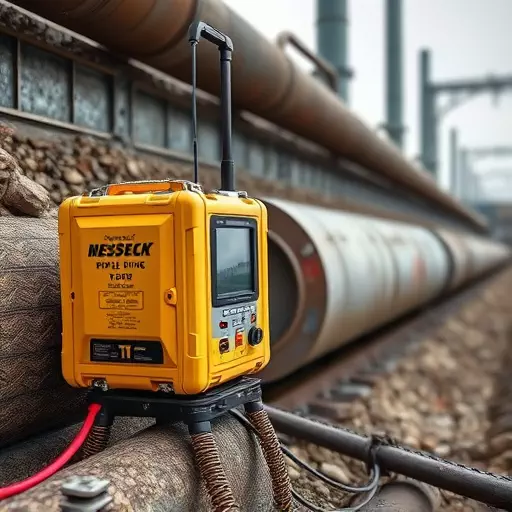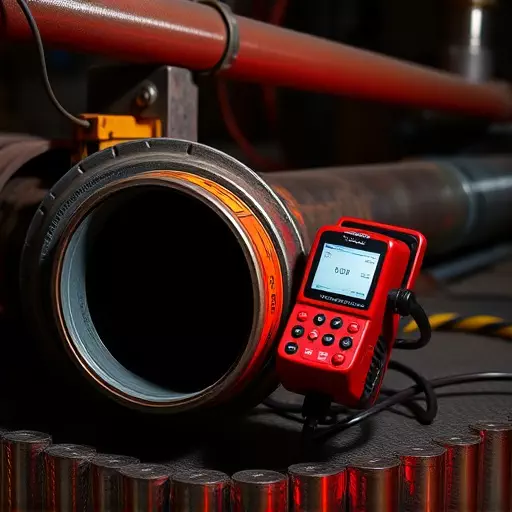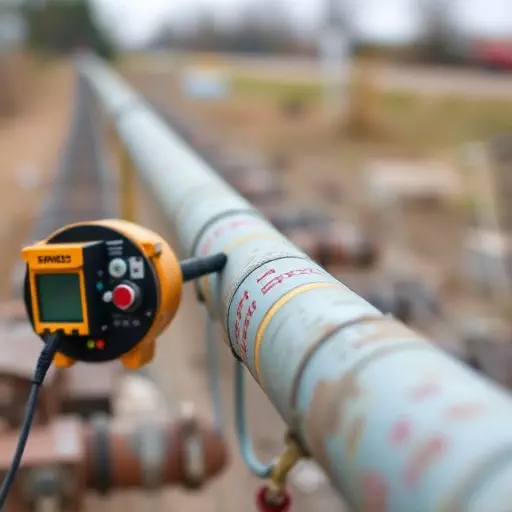Advanced sonde technology revolutionizes sewer line locating in cities like Toledo by providing precise real-time data mapping of underground pipes. Non-invasive methods employing specialized sensors ensure efficient maintenance, repairs, and installations while minimizing ground disruption. Sonde equipment for pipe locating is a game-changer in utility management, enabling safe and effective navigation through Toledo's complex underground landscape.
“In the realm of infrastructure maintenance, accurate sewer line location is paramount. This comprehensive guide explores the intricate world of sonde and locating tools, essential for navigating beneath our feet. From understanding the foundational concepts to delving into advanced techniques, we uncover how these tools revolutionise pipe locating.
We’ll dissect various sonde equipment, highlight successful case studies involving Sonde and Locating Toledo projects, and provide insights into the latest technologies enhancing this vital process.”
- Understanding Sonde and Locating Tools: A Brief Overview
- Types of Sonde Equipment for Pipe Locating
- Advanced Locating Techniques Using Sonde Technology
- Case Studies: Successful Sonde and Locating Toledo Projects
Understanding Sonde and Locating Tools: A Brief Overview

Sonde and Locating Tools have become indispensable in the infrastructure maintenance sector, especially when it comes to identifying and mapping underground pipes, cables, and other utilities. These tools are designed to navigate through narrow spaces, such as sewer lines, and provide real-time data on their location and condition.
A Sonde is a small, flexible device inserted into a pipe or buried utility to transmit information about its surroundings back to the operator. Combining Sondes with advanced locating techniques, professionals can accurately detect and map underground structures. This process involves using electromagnetic fields, ground penetration radar (GPR), and other innovative methods to pinpoint the exact positions of various utilities, ensuring safe and efficient maintenance without disrupting the surface or causing damage to buried assets.
Types of Sonde Equipment for Pipe Locating

Sonde equipment plays a pivotal role in the precise location of underground pipes, a critical task for maintenance, repairs, or new installations. These tools are designed to navigate through the earth and accurately pinpoint the position of pipes, ensuring minimal damage during excavation. The market offers various sonde and locating techniques, each with its unique advantages.
One common type is the electromagnetic sonde, which uses magnetic fields to detect metal pipelines. This non-invasive method is effective for locating steel or ductile iron pipes. Alternatively, mechanical sondes physically touch the pipe surfaces, using sensors to transmit data about their position. These are ideal for concrete or plastic pipes. Advanced technologies like radio frequency (RF) and ground penetrating radar (GPR) also exist, offering highly accurate, non-destructive solutions for diverse pipe materials.
Advanced Locating Techniques Using Sonde Technology

Advanced Locating Techniques Using Sonde Technology have revolutionized the way we navigate and map underground infrastructure, particularly in the field of sewer line locating. A sonde is a specialized device that emits signals to pinpoint the exact location of pipes beneath the surface. This method, known as sonde and locating techniques, involves deploying the sonde into the ground through a probe or drill, which then sends real-time data back to the operator. By utilizing different types of sensors, sonde equipment for pipe locating can detect metal, plastic, or concrete pipes, ensuring accurate identification.
Locating Toledo, as an example, benefits immensely from these advancements. The city’s extensive network of sewers and pipelines demands precise and efficient locating methods to aid in maintenance, repairs, and new installations. Sonde technology offers a non-invasive approach, minimizing disruption during operations, which is crucial for urban environments where disturbing the ground can cause significant setbacks and costs.
Case Studies: Successful Sonde and Locating Toledo Projects



